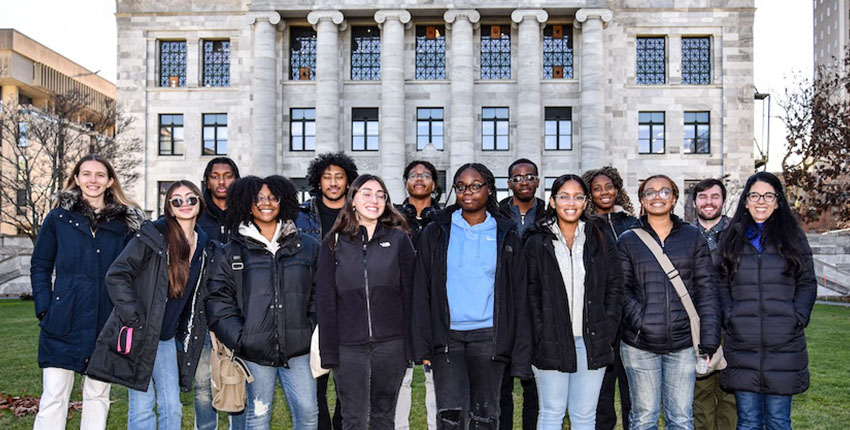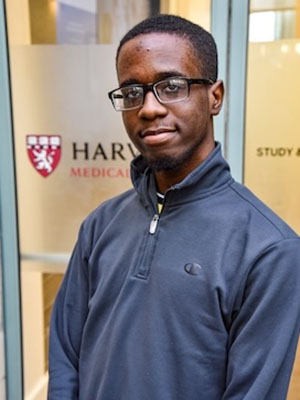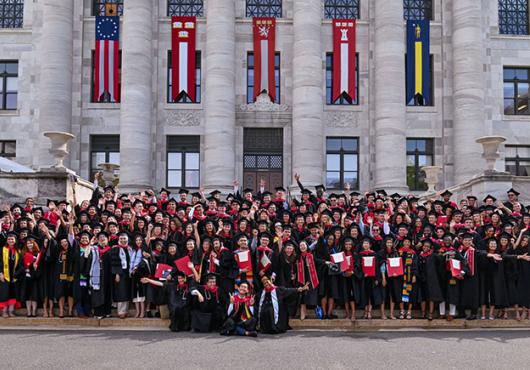
Identify, invent, implement: These basic steps equipped high school students with the skills needed for careers at the crossroads of medicine and engineering as part of the Junior HealthTech Fellowship program at Harvard Medical School.
Led by the HMS Center for Primary Care, the program teaches participants to solve problems in health care using a framework known as biodesign that was developed at Stanford University.
Eleventh-grade students at Brooke High School, a Boston public charter school, spend seven months learning biodesign under the guidance of HMS HealthTech Fellows — health care professionals with a background in health care, engineering, and business who are also training in biodesign.
Paola Abello, director of innovation in the Center for Primary Care, said that teaching the Stanford biodesign process in the HealthTech Fellowship program and in the Junior HealthTech program “sets the foundation for fellows to be empowered to solve problems and launch careers that will create an equitable health care system.”
Teaching biodesign
The Center for Primary Care launched Junior HealthTech as a means of fostering diversity among students entering STEM fields.
According to a National Science Foundation report, in 2021, only 35 percent of people employed in STEM occupations were women, while just 15 percent were Hispanic, 10 percent were Asian, and 9 percent were Black. The majority of Brooke High School students are Black or Latinx and live in neighborhoods where the average family income is less than $40,000.
“Students are used to hearing about well-known career choices such as engineer, doctor, and nurse. They’re great professions, but not necessarily the right fit for all students,” said Adaline King, medical interventions and environmental science teacher at Brooke High School. “Programs like this expose students to career paths and fields that they may not have known about.”
Mentors presented students with clinical vignettes, short stories featuring different patient or clinical encounters. These served as prompts for students to select a problem to study and solve, and ultimately present their project to a panel of professionals, simulating a pitch to investors.
Students in the 2022-2023 class broke into two project teams.
Uncluttering the operating room
One team chose to tackle an issue that many patients never see: surgical clutter. It occurs in small operating rooms where equipment is tightly packed around the surgical team and the patient.
“In those settings, it’s difficult for the surgical team to manage wiring and tubing,” said Bridget Slomka, HMS HealthTech Fellowship alumna and Junior HealthTech team leader. “These things can become tripping hazards, become contaminated, and even pose infection risk.”
The team focused its efforts on the irrigation tissue machine, used to keep the surgical site clean. If the tubing is too long for a confined space, it might lie on the patient, increasing the risk for contamination.

The students developed the concept of an irrigation tool that could extend and retract tubing to fit the needs of the surgical team, the patient, and the constraints of the operating room. They named it Irrigease.
Student Donald Joseph, a member of the Irrigease team, said, “I was nervous to present our product to the panel of judges who were well-known and had a lot of accolades, but I was also confident because we had worked so hard for months and were ready to share the benefits and limitations of it.”
“It really was incredible to see what they can come up with when working together,” Slomka said. “My main takeaway is that innovation does not have to happen in a vacuum. You don’t need to be a genius in a lab to create something incredible.”
Cardiac monitoring in low- and middle-income countries
The second team, mentored by HMS HealthTech Fellowship alumna Nitya Rajeshuni, proposed a solution to help pediatric patients with congenital heart defects. The students’ design was geared toward patients in low and middle-income countries where underdiagnosis of congenital heart disease is a problem.
“Many patients could receive lifesaving treatments if diagnosed in time, but it’s a struggle for health care professionals to even reach patients due to limited health care access,” said Rajeshuni.
Students proposed a cardiac monitor similar to a Holter monitor that was affordable, made of sustainable materials, and alerted parents when their child began experiencing an atypical heart rhythm.
“Overall, the judges were impressed by both teams,” said Rajeshuni. “The judges asked hard questions and the students did a great job answering because they had done their research and put in the time needed to prepare an excellent pitch.”
Learning more than design
The program includes a Stanford faculty-inspired component emphasizing that designers are in control of their lives.
“If students are interested in STEM careers, it may seem like there is only one path to reach their goal,” said Slomka, “but they can apply design thinking to the choices in their life and be confident in their decisions.”
“I originally thought the program was going to be focused on medical design,” said Joseph. “I was really surprised and thankful for the ‘design your life’ aspect because it was a nice way to give us guidance and a system to use beyond high school.”
Students also gained skills in collaboration and networking and built the confidence needed to ask for help. Joseph built on those skills to develop a new career path.
“I’m interested in research and biomedical design, because this program taught me about careers that I didn’t know about before,” he said.





